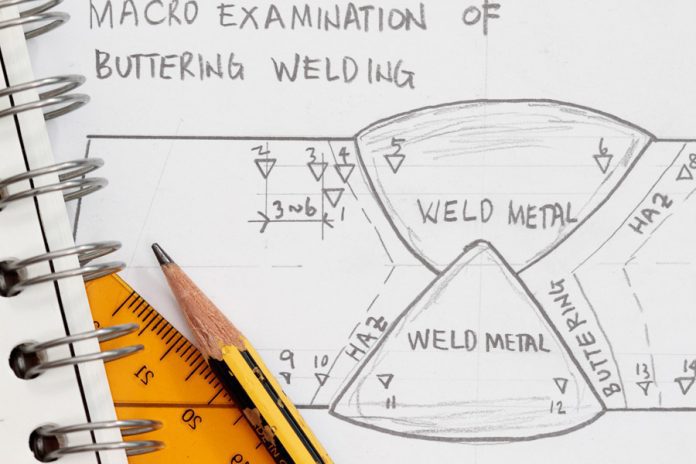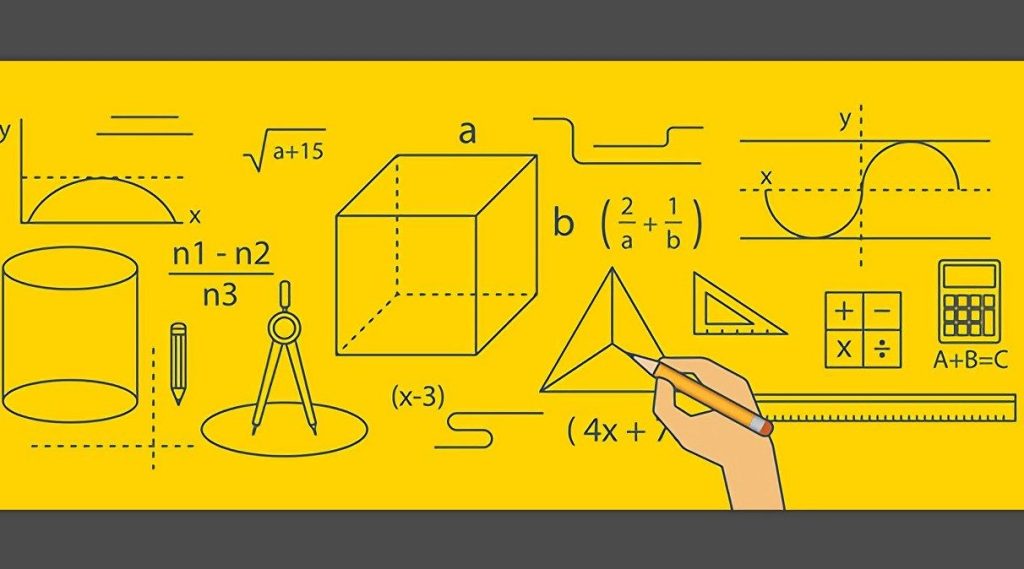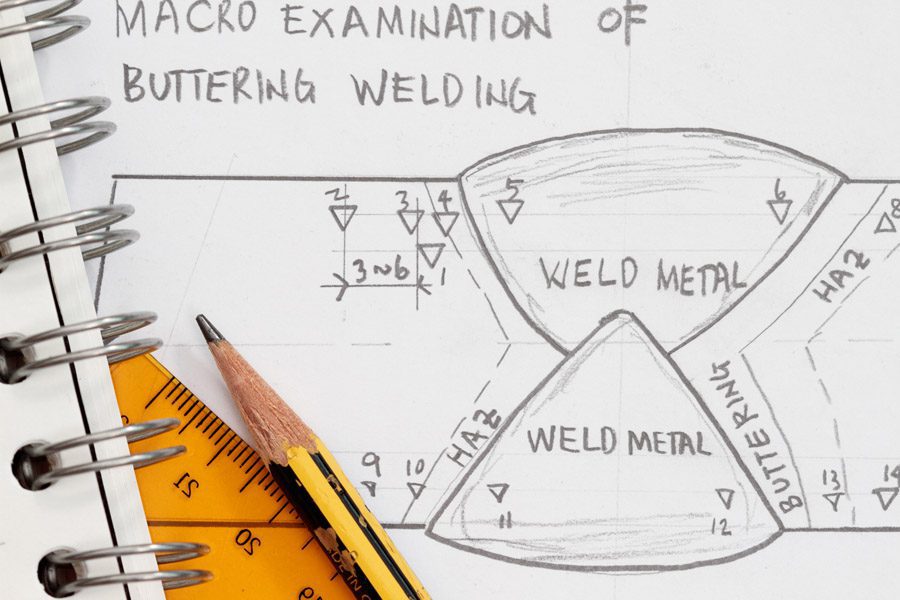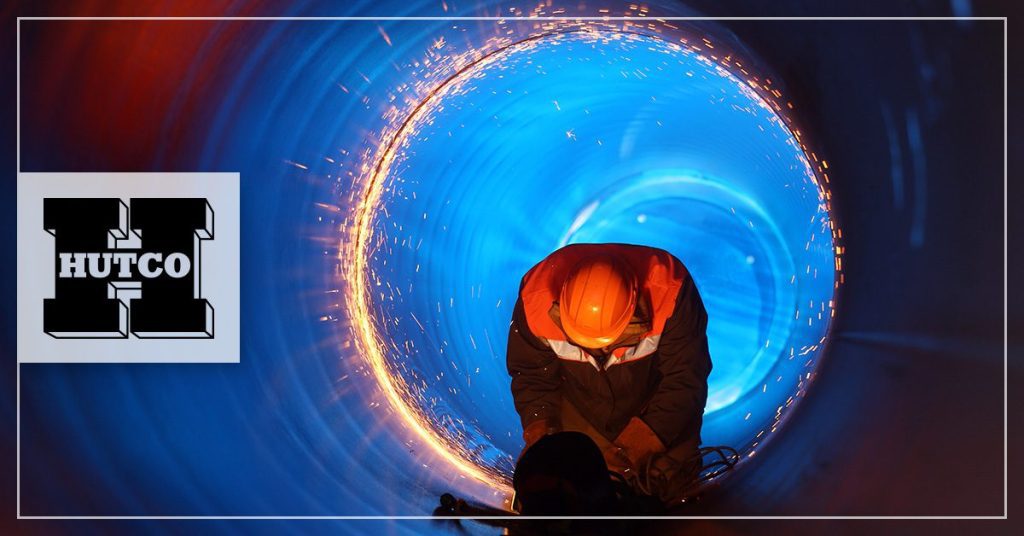If you’ve ever considered pursuing a career in welding but have found yourself questioning whether your math skills are up to par, you’re not alone.
The common misconception is that being a welder requires a strong background in mathematics. However, the truth is that while basic math skills are essential, there is no need for an extensive knowledge of complex equations.
This article will explore the math requirements for becoming a welder and debunk the myth that you must be a math whiz to excel in this field.
So, if you’re ready to unlock the truth behind the math mystery of welding, let’s get started!
Understanding the Role of Math in Welding
When it comes to welding, math plays a crucial role in ensuring the quality and precision of welds. From basic calculations to advanced techniques, math is a fundamental skill every welder should possess to excel in their profession.
This article will explore how math is used in welding and its significance in different aspects of the welding process.
Basic Math Concepts
To build a strong foundation in welding, it is essential to have a good grasp of basic math concepts. Addition, subtraction, multiplication, and division are everyday operations that welders perform to calculate measurements, quantities, and dimensions. Whether measuring the length of a metal piece or determining the number of welds needed, these basic math skills are indispensable in getting accurate results.
Decimals, fractions, and percentages are essential tools in the welder’s toolbox. Precision is key in welding, and working with decimals and fractions allows welders to measure and cut materials accurately. Additionally, percentages are often used in welding parameters such as penetration depth and heat input calculations. A solid understanding of these concepts ensures welds are executed correctly and meet the required specifications.
Ratios and proportions are mathematical tools that help welders maintain consistency in their work. Understanding ratios allows welders to mix appropriate ratios of gas and wire for different welding processes. At the same time, proportions are crucial in calculating the proper amount of filler metal needed for a weld joint. These concepts ensure the right balance, resulting in solid and durable welds.
Basic algebraic equations are another area where math is applied in welding. Whether rearranging formulas to calculate unknown variables or solving equations to determine the proper welding parameters, algebra helps welders analyze and manipulate data effectively. Using algebraic techniques, welders can optimize their welding processes and achieve the desired outcome.
Having a firm grasp of the metric system is also crucial for welders. Most countries worldwide use the metric system, and being familiar with its units of measurement is essential for accurate calculations. From millimeters to meters, understanding the metric system enables welders to work effectively with measurements, regardless of the system used in their specific industry.
Measurement and Unit Conversions
Welding involves precise measurements, and working with different measurement systems is a vital skill for welders. Understanding different measurement systems, such as the metric and imperial systems, allows welders to communicate effectively with clients, engineers, and colleagues who may use different systems.
Converting between metric and imperial units is also a necessary skill for welders. Being able to convert between millimeters and inches, for example, is crucial when working with plans or measurements that use a different unit system. Welders must be able to convert measurements accurately to ensure that precise dimensions are met and that the materials are cut or shaped accordingly.
Using different measuring instruments is another aspect of measurement in welding. Welders must use tools such as rulers, calipers, tape measures, and micrometers to take accurate measurements. Understanding how to use these instruments correctly ensures precise and consistent measurements, resulting in quality welds.
Calculating length, area, and volume is an essential skill for welders. Whether measuring the length of a weld joint, calculating the area of a metal piece, or determining the volume of a container, these measurements are vital in estimating material quantities and ensuring that the appropriate amount of filler metal is used. These calculations are crucial in minimizing waste and maintaining cost-effectiveness in welding.
Geometry and Trigonometry
Geometry and trigonometry are branches of mathematics that are widely used in welding. Understanding the properties of basic geometric shapes allows welders to calculate angles, perimeters, and areas accurately. Welders often need to determine the angle of a joint, ensuring that it is correctly aligned for the desired weld. Calculating perimeters and areas is crucial when estimating material requirements and determining the length of welds.
Trigonometric functions such as sine, cosine, and tangent are extensively used in welding. These functions calculate angles and distances in welding joints, ensuring that welds are executed precisely. By understanding right triangle relationships, welders can accurately determine the length of sides and angles, allowing for accurate positioning and alignment of welds.
Algebraic Applications
Algebra plays a significant role in solving welding problems. By using algebraic principles, welders can analyze complex scenarios and arrive at solutions. Whether it is rearranging formulas to solve for variables or simplifying and solving algebraic expressions, algebra allows welders to optimize their welding processes and make informed decisions.
Working with formulas and equations is a common occurrence in welding. Welders often need to calculate parameters such as heat input, travel speed, or voltage. By using the appropriate formulas and equations, welders can ensure that these parameters are set correctly and that welds meet the required specifications. Algebraic skills are critical in manipulating these formulas and solving for unknown variables.
Simplifying algebraic expressions is another essential skill for welders. In complex welding scenarios, simplifying equations allows welders to focus on the key variables and make accurate calculations. By simplifying the equations, welders can solve problems efficiently and effectively, ensuring that welds are executed correctly.
Interpreting Blueprints
Interpreting blueprints is a crucial skill for welders as it guides them in correctly executing welds according to the desired specifications. Understanding welding symbols is essential in interpreting blueprints, as these symbols provide valuable information about the type of weld, size, and location. By understanding these symbols, welders can identify the welding process, filler metal, and other critical details necessary for executing the weld.
Reading dimensional drawings accurately is another vital skill for welders. Dimensional drawings provide precise measurements and specifications for weld joints and components. By understanding these drawings, welders can ensure that the dimensions are met and the joints are positioned correctly. This attention to detail is crucial in producing quality welds and meeting the required standards.
Calculating material requirements based on blueprints is a common task for welders. By analyzing the drawings and understanding the dimensions and quantities needed, welders can estimate the material required for a project. This estimation ensures that the correct amount of material is ordered, reducing waste and maintaining cost-effectiveness.
Translating information from blueprints into practical applications is a skill that welders must have. Understanding the dimensions, specifications, and welding symbols provided in blueprints allows welders to execute welds accurately. By applying the information effectively, welders can ensure that the welds meet the required standards and achieve the desired outcome.
Calculating Welding Parameters
Calculating welding parameters is a critical aspect of the welding process. Welders must determine a specific weld’s appropriate voltage, current, and wire feed speed. These parameters are vital in achieving the desired weld quality, strength, and appearance. Using the appropriate calculations ensures that welds are executed correctly and meet the specified requirements.
Calculating travel speed is another critical consideration for welders. The travel speed determines the rate at which the weld progresses, and getting it right is crucial for achieving the desired heat input and weld quality. By calculating the travel speed based on the welding parameters, welders can optimize their welding process and produce quality welds consistently.
Adjusting parameters for different welding positions is a skill that experienced welders possess. Different welding positions require adjustments in welding parameters to ensure the welds meet the required standards. By understanding the effects of gravity and heat distribution in different positions, welders can modify the parameters to achieve solid and sound welds in various orientations.
Applying heat input and penetration calculations is essential for welders. Heat input determines the amount of energy transferred to the weld, and calculating it accurately ensures that the weld remains within acceptable limits. Penetration calculations determine the depth of fusion, and getting it right is crucial for achieving weld strength and integrity. By understanding these calculations, welders can optimize their welding process and produce high-quality welds.
Determining Material Strength
Understanding material properties is crucial for welders, as it allows them to select the appropriate filler metal and welding processes for different materials. Knowing the tensile and yield strength of materials is essential in determining the compatibility of welds and ensuring that the joints will withstand the required loads. By understanding the material properties, welders can make informed decisions in selecting the appropriate welding parameters to achieve solid and durable welds.
Calculating tensile and yield strength is an essential aspect of determining material strength. These calculations provide insights into the maximum load a material can withstand before failure. By accurately determining the tensile and yield strength, welders can ensure that the welds are designed and executed to handle the expected stresses and loads.
Determining proper preheating and post-weld heat treatment is another consideration for welders. Certain materials require preheating before welding to reduce the risk of cracking and improve weldability. Post-weld heat treatment may also be necessary to relieve stresses and enhance the mechanical properties of the weld. By analyzing the material properties and calculating, welders can determine the proper preheating and post-weld heat treatment requirements.
Analyzing material test data is an essential part of determining material strength. Welders may need to interpret test results, such as tensile or impact tests, to understand the behavior and capabilities of different materials. By analyzing this data, welders can assess the suitability of materials for specific applications and make informed decisions regarding welding parameters and joint design.
Advanced Techniques and Processes
As welders gain experience and expertise, they often encounter advanced techniques and processes that require higher-level math skills. Calculating joint design is an important consideration when working with complex weld joints. By understanding the limitations and load requirements of the joint, welders can calculate the required weld size and reinforcement to ensure that the joint is strong and adequately supported.
Estimating welding distortion is another complex task that requires advanced math skills. Welding processes often introduce thermal stresses that can cause materials to deform or distort. By understanding the principles of heat transfer and material behavior, welders can estimate the amount of distortion and make necessary adjustments in the welding process to minimize its effects.
Evaluating weld integrity and soundness is a crucial aspect of advanced welding processes. Welders often need to assess the quality and integrity of welds using nondestructive testing methods such as radiographic or ultrasonic testing.
By understanding the principles of these testing methods and interpreting the results, welders can ensure that the welds meet the required standards and are free from defects.
Math in Welding Certification Exams
Math plays a significant role in welding certification exams. These exams test a welder’s ability to perform calculations accurately and demonstrate their understanding of mathematical concepts applied in welding. From basic arithmetic to advanced calculations, welders must be proficient in various math skills to pass these exams and obtain their certifications.
Welding certification exams often include questions that assess a welder’s ability to read and interpret blueprints, calculate welding parameters, and determine material properties and strengths.
By demonstrating their proficiency in these areas, welders can showcase their knowledge and skills in applying math principles to real-world welding scenarios.
Practical Considerations for Welders
While math skills may seem daunting to some, welders must embrace the practical considerations of applying math to everyday tasks. These considerations not only enhance the quality and precision of welds but also contribute to the overall efficiency and effectiveness of the welding process.
Accuracy and precision are of utmost importance in welding. Even minor miscalculations or inaccuracies can lead to faulty welds and compromise the integrity of the joint. By practicing and honing their math skills, welders can ensure that their measurements, calculations, and execution are accurate and precise, resulting in high-quality welds that meet the required standards.
Using calculators and software tools can also aid welders in performing complex calculations and ensuring accuracy. While manual calculations are still necessary, these tools can help verify results and save time in specific scenarios. Welders should be familiar with calculators and software tools commonly used in the welding industry to optimize their workflow and increase efficiency.
Continuing education and skill development are crucial in a welder’s career. As technology advances and new techniques emerge, welders must stay updated with the latest advancements and trends. This includes keeping abreast of new mathematical principles and tools to enhance their welding capabilities. By continually expanding their knowledge and skill set, welders can stay competitive and adapt to evolving industry standards.
In conclusion, math skills are indispensable for welders. From basic math concepts to advanced calculations, math plays a critical role in every facet of welding. Whether measuring and converting units, calculating welding parameters, or determining material strength, math ensures that welds are executed accurately and meet the required specifications.
By embracing math and continuously honing their skills, welders can excel in their profession and contribute to developing quality welds that are vital in various industries.










































